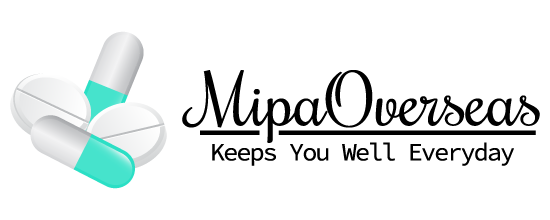What is Ceftriaxone Injection?
Ceftriaxone Injection is a type of medication that belongs to the class of antibiotics known as cephalosporins. It is a broad-spectrum antibiotic used to treat various bacterial infections. Here are some important details about Ceftriaxone Injection:
- Indications: Ceftriaxone is used to treat a wide range of bacterial infections. This can include respiratory tract infections, skin and soft tissue infections, urinary tract infections, bone and joint infections, septicemia (bloodstream infection), meningitis (infection of the membranes surrounding the brain and spinal cord), and other serious infections.
- Mechanism of Action: Ceftriaxone works by inhibiting the formation of the bacterial cell wall. This weakens the structure of the bacteria, leading to their eventual death.
Ceftriaxone Injection Uses
- Respiratory Tract Infections:
- Pneumonia
- Bronchitis
- Sinusitis
- Pharyngitis (sore throat)
- Skin and Soft Tissue Infections:
- Cellulitis (skin infection)
- Abscesses
- Wound infections
- Urinary Tract Infections (UTIs):
- Pyelonephritis (kidney infection)
- Cystitis (bladder infection)
- Bone and Joint Infections:
- Osteomyelitis (bone infection)
- Septic arthritis
- Gynecological Infections:
- Pelvic inflammatory disease (PID)
- Intra-abdominal Infections:
- Peritonitis (inflammation of the abdominal lining)
- Meningitis:
- Bacterial meningitis (infection of the membranes surrounding the brain and spinal cord)
- Septicemia:
- Bloodstream infections
- Endocarditis:
- Infection of the inner lining of the heart
- Gonorrhea:
- Ceftriaxone is part of the recommended treatment for gonorrhea, often given in
Ceftriaxone Injection – Mechanism of Action and Pharmacology
- Mechanism of Action:
- Inhibition of Cell Wall Synthesis: Like all beta-lactam antibiotics, Ceftriaxone exerts its bactericidal (bacteria-killing) effect by interfering with the synthesis of the bacterial cell wall. Bacteria have a rigid cell wall that provides structural support and protection. Ceftriaxone inhibits the enzymes (penicillin-binding proteins or PBPs) responsible for synthesizing this cell wall.
- Beta-Lactam Ring: The core structure of Ceftriaxone contains a beta-lactam ring. This ring is crucial for its activity as it binds to the PBPs, preventing them from cross-linking the peptidoglycan chains that form the bacterial cell wall. Without proper cross-linking, the cell wall weakens and the bacteria become susceptible to osmotic pressure, eventually leading to cell lysis and death.
- Pharmacology:
- Absorption and Distribution: Ceftriaxone is primarily administered by injection (intravenous or intramuscular) due to its poor oral bioavailability. After administration, it is rapidly absorbed into the bloodstream. It achieves high concentrations in various body fluids and tissues, making it effective against infections in multiple organ systems.
- Plasma Protein Binding: Approximately 85-95% of Ceftriaxone in the blood is bound to plasma proteins. This binding can affect its distribution and elimination from the body.
Ceftriaxone Injection – Composition and Active Ingredients
Active Ingredient:
- Ceftriaxone Sodium: This is the active pharmaceutical ingredient (API) of the injection. It is a semi-synthetic, broad-spectrum cephalosporin antibiotic. It is provided in the form of ceftriaxone sodium, which is a water-soluble salt.
Inactive Ingredients:
- Diluent: Ceftriaxone for injection is usually provided as a powder in a vial. It requires reconstitution with a compatible diluent (usually sterile water for injection) before administration.
- Sodium Hydroxide (for pH Adjustment): This may be used to adjust the pH of the reconstituted solution to ensure it falls within the acceptable range for safe administration.
- Other Stabilizers or Excipients: Depending on the specific manufacturer and formulation, there may be additional excipients or stabilizers used to maintain the stability and sterility of the product.
Ceftriaxone Injection – Side-effects
- Pain or Swelling at the Injection Site: This is a common side effect, especially when the injection is administered intramuscularly.
- Diarrhea or Loose Stools: This can occur as a result of the disruption of normal gut bacteria.
- Nausea or Vomiting: Some people may experience gastrointestinal upset.
- Rash or Itching: This can be a sign of an allergic reaction. If severe or accompanied by difficulty breathing or swelling of the face, lips, tongue, or throat, seek immediate medical attention.
- Fever or Chills: This can be indicative of an allergic reaction or, in some cases, an infection.
- Headache or Dizziness: Some individuals may experience these symptoms.
- Abnormal Liver Function Tests: In rare cases, Ceftriaxone can affect liver enzymes. This is usually reversible once the medication is stopped.
- Hypersensitivity Reactions: Severe allergic reactions can occur, although they are rare. Symptoms may include severe rash, itching, difficulty breathing, and swelling of the face, lips, tongue, or throat. Seek immediate medical attention if these symptoms occur.
- Pseudomembranous Colitis: This is an infection of the colon that can occur due to the disruption of normal gut flora. It can cause severe diarrhea, abdominal pain, and fever.
- Kidney Dysfunction: In rare cases, Ceftriaxone can lead to changes in kidney function.
